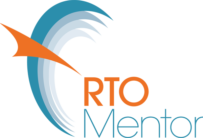The latest NSSC Communique are stipulating that trainers and assessors must be able to demonstrate vocational competencies to at least the level delivered and assessed. This is nothing new, but the point is definitely being driven home now.
And…Goodness me this seems to be something that trainers are so reticent to do. So I totally understand why there seem to be so many questions out within RTOs at the moment.
Every RTO needs a Matrix of its Trainers/Assessors skills and identify what units they can training in and what not to. Let me tell you we need to do the mapping and provide a matrix. This needs to be backed up with evidence of competence.
As an RTO Manager it certainly makes life easier for you to make decision on your training calendars…..”Yes Johnny can deliver that unit of competence, I will lock him in”
Before anyone goes out and trains and assessing on your RTOs behalf, as an RTO Manager / CEO you need to see that the trainers have:
- The qualifications, down to the unit level
- recent and relevant experience doing that job in industry
- And recent PD for training, assessing and your vocational area
And it is up to you to decide your compliance procedures.
So the easiest way of showing this is via a Trainer Competency Matrix down to unit level they intent to train and assess against. Trainers can only train those units that are on their matrix. Any changes to their units (of delivery), then they must update the matrix.
In addition, when a Qualification/Training Package is upgraded (and placed on your scope) – Trainers/Assessors should be mapping their skills to the new Qualification/Training Package requirements.
There is some talk of getting an RPL to the latest version of the Training Package. This is not quite true. You do not have to undertake an RPL but you must provide evidence that you have the skills to undertake that unit.
I know I am on my soapbox, as I am writing to you all…I am speaking from personal experience….from an RTO perspective you need to map your trainers and assessors competence down to a unit level including vocational currency, industry currency and VET PD this way they have no doubt the trainer is competent in what they are training/ assessing.
I know from a trainers perspective the idea of supplying a skills matrix will become common place in RTOs. Even though the task of completing it might seem daunting now, it is advisable to do one which drills down to each individual UoC before your RTO asks. Include your qualifications/ units of competency showing vocational currency, industry currency and VET PD ready for any RTO that requires you to show it.

If the Trainer holds the A version of the Unit and we are now into the B version of the Unit, does the Trainer need to provide any further evidence on the Trainer Matrix? ASQA says ‘no’, but our RTO is saying yes we do???
Hi Denise, often the changes from an A unit to a B unit are minimal. I would review the changes and see if they need you supply additional evidence. I am thinking (without knowing which units you are referring to), that the evidence you need to add is not going to be huge, if any at all.
HI Meredith
wondering where I could get a definitive answer on this, if ASQA is saying no, nothing else needed. I am referring to the Assessing Units in the TAE Training Package that have only slight changes to words used.
If you were commencing wok for a new RTO, they would want to know you were able to deliver the latest (“B”) version, not the early one. The changes were made in October 2011, so I would expect that at least a trainer would review the specifics of the changes for each unit (which were minor) and confirm that they are still competent to deliver.
Hi ,
Just wanted to know whether there was any software that RTO s use to make this job simpler.
Thanks
Hi Smitha Vanessa McCarthy is the creator of Prickly2sweet. The system saving thousands in time and money whilst reviewing assessment. Go to https://prickly2sweet.com.au/
However that is for units of competency not trainer and assessors.
I’ve used Student Management Systems to help, but you still need to take the time to gather the actual data of what each person has done.